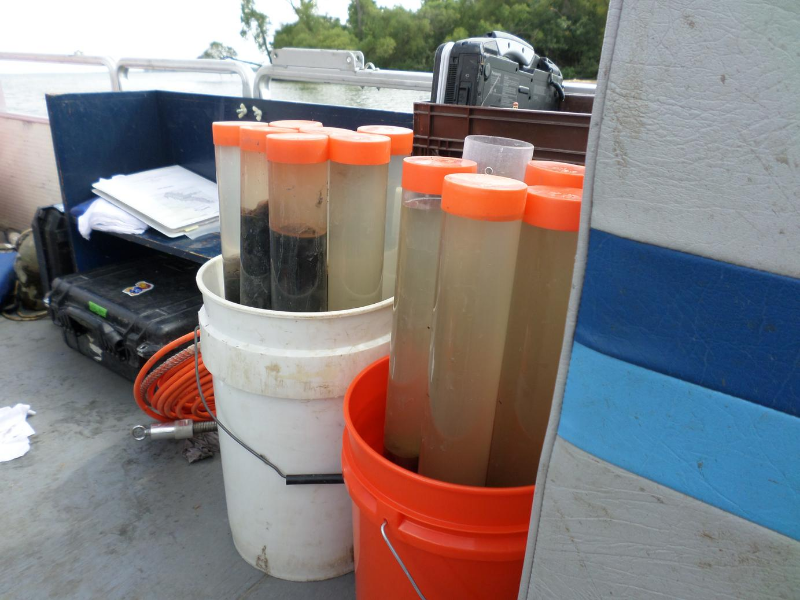HABs are a global phenomena that occur in both fresh and salt water. They can occur at any time, even when lakes and water bodies are frozen over! In saltwater environments, the most common type of algae bloom is red tide. The type of most concern and most common in fresh water is blue-green algae bloom. Blue-green algae blooms have been reported in almost all 50 states, including all the way north to Alaska and south to Florida.
HABs have a wide range of impacts on the environment, including being potentially harmful, and even lethal, to humans and animals. Because of this, the Kansas Department of Health and Environment began a HAB monitoring program in 2010. Since that time, KDHE has helped fund and lead research on HABs. These efforts are helping to increase the understanding of HABs, including how to predict, control and mitigate for them in the environment.
The WSU Environmental Finance Center has partnered with colleagues at the Kansas Biological Survey to assess potential HAB treatment options for Marion Reservoir near Hillsboro, Kansas. This reservoir is a drinking water supply for several nearby towns and has experienced HABs for several years. The researchers have combined their expertise in different disciplines to seek ways to control and manage the HAB problem.
Nick Willis, senior program manager at WSU Environmental Finance Center, is the lead researcher for the project. Nick has a wide background in nutrient management for public wastewater operations. Dr. Ted Harris is the lead researcher for Kansas Biological Survey and brings his expertise in nutrient management and modeling in lakes and reservoirs.

The project has assessed the effectiveness of two different potential treatment options that would help reduce the likelihood of algal blooms. While both treatment options did reduce available phosphate in the water, neither option seems economically feasible for large Kansas lakes. In addition, project personnel installed buoys to monitor water quality conditions in the lake. This monitoring has identified the climatic conditions that often precede or influence algal blooms. This information will help predict when blooms occur and will be useful for lake managers and water treatment plant operators.

The project began in 2019, but was delayed due to the unusually high rainfall totals that year. Field work began this spring and has continued since. The project is providing insights into the climate and water conditions under which HABs occur in the lake and is assessing possible mitigation strategies to help ensure the safety of the local communities drinking water. The project is being funded by a contract with the KDHE. Learn more about the HAB treatment options for Marion Reservoir project here.
Because HABs aren’t just limited to the Midwest, WSU EFC staff recently co-hosted a national webinar on HABs with partners at the Syracuse University Environmental Finance Center. More than 150 people throughout the country participated in the webinar, including representatives from Alaska to the East Coast.
In the webinar, EFC staff shared information on the status of HABs in Kansas and the risk to water treatment plants. In addition, officials from State of New York shared information on their HAB program and shared insights on technology that is being tested and used to control algal blooms. Check out the full webinar recording here, and subscribe to the Environmental Finance Center Network's email list for updates on a follow-up webinar.
Stay tuned for more updates on this important environmental topic in the future!


